Splash! Damn it, I think to myself. Clean it should be now, my trail running shoe, with which I have just splashed into the middle of a huge puddle. Unfortunately, it started to rain on our trail run along the Bisse du Tsittoret starting in Crans Montana. And if you run close behind the person in front (or in this case, the woman in front), you won't see puddles until you're already standing in them.
Crans Montana, 10 o'clock in the morning, the sun is shining - not. This is actually quite practical, because running along the south side of the Rhone Valley in the Valais in bright sunshine is normally only recommended for real heat freaks. Which neither of us are, because both Marina and I are only too familiar with the problem of an acute drop in performance at high temperatures in the blazing sun. We are therefore quite happy that the sky is gray, the trees surrounding us are green and the rippling water in the Bisse du Tsittoret is crystal clear, as this means we can keep a cool head on our run.
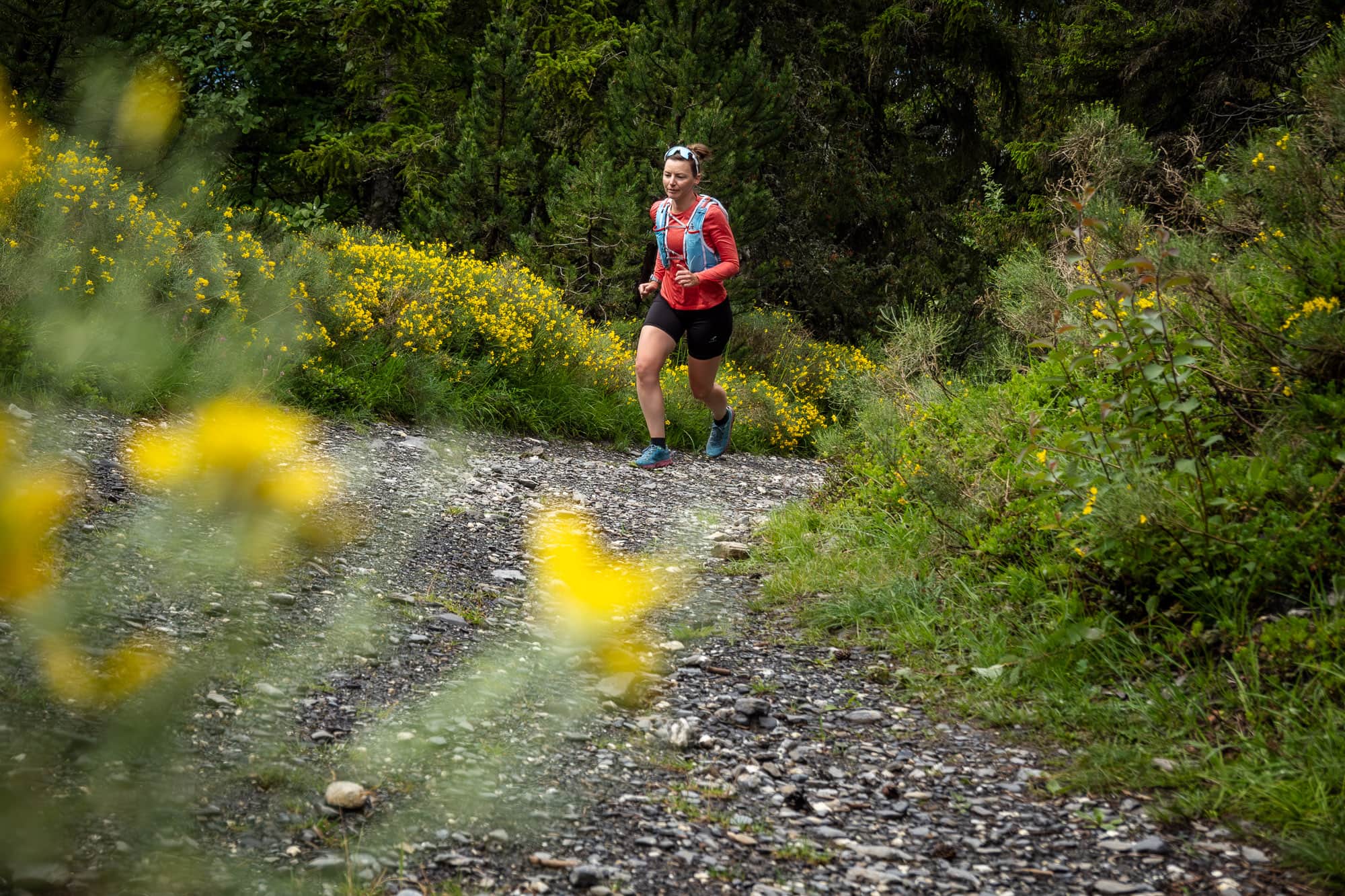
A bisse like this should actually only run from A to B with a barely perceptible gradient. However, our specimen here greets us with a few short but sometimes steep climbs that we didn't expect - but the 450 meters of altitude on this run have to come from somewhere.
Starting from the fashionable ski and golf resort of Crans Montana, we pass idyllic chalets in the mountain forest and barely have a chance to warm up due to the incline.
At an altitude of around 1,800 m, however, the Bisse du Tsittoret has found an altitude where it feels at home and stays for a while. A short turn leads us over a small wooden bridge, which is very welcome at this point, as otherwise we would have to cross the well-filled mountain stream on foot. We are now above the Restaurant Plumachit and the hiking trail along the Bisse du Tsittoret now corresponds to the typical image of a Valais bisse trail: a pleasant path with a gentle gradient along a babbling stream, created many centuries ago to irrigate low-lying regions.
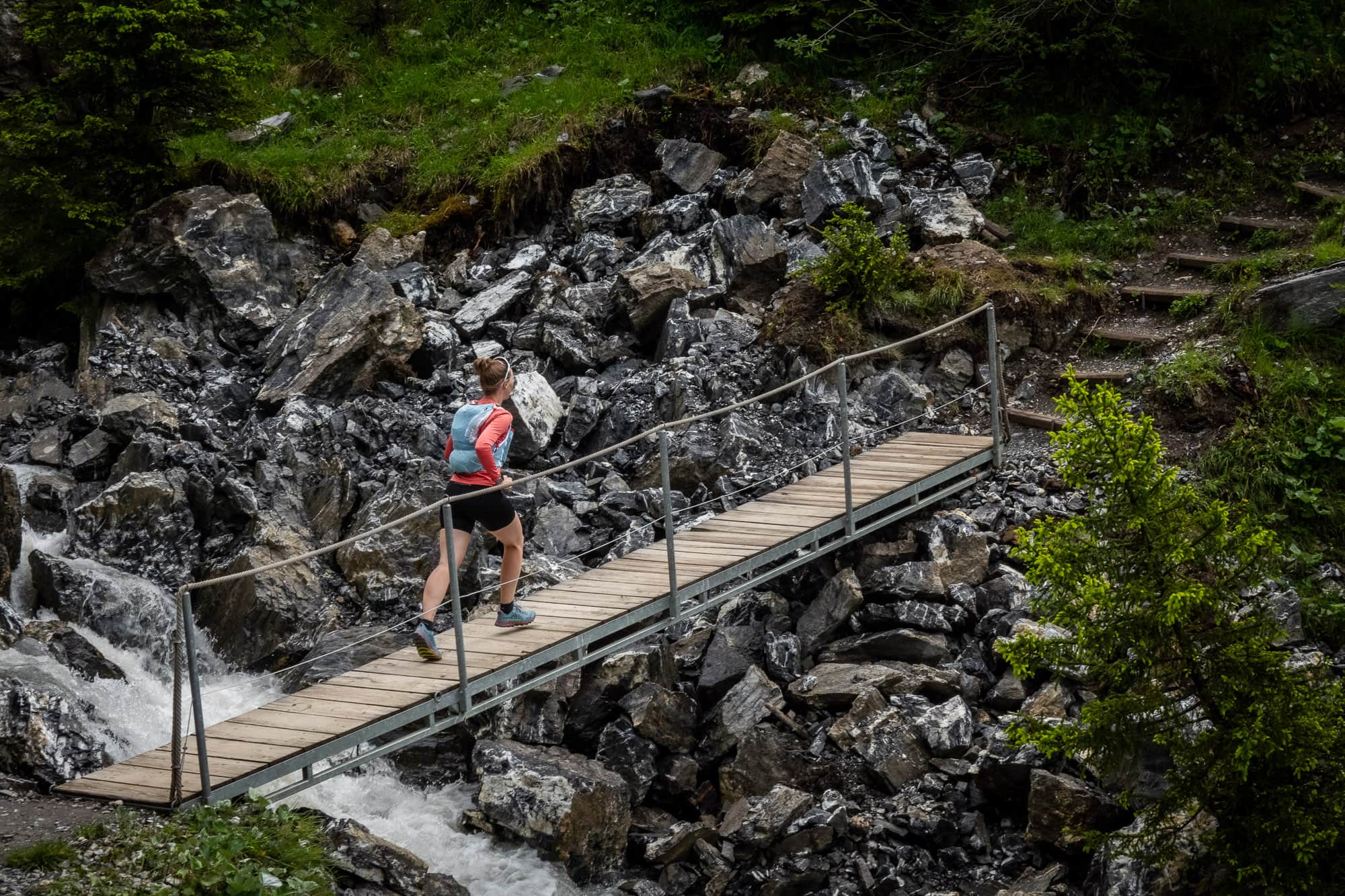
The Bisse du Tsittoret was probably built around the 15th century and diverted some of the water from the Tièche away from the natural mountain stream and towards the numerous vineyards around Sierre. The dry southern slopes of the Valais made irrigating the vineyards and meadows an extremely laborious undertaking even in earlier times. The cool mountain water of the Bisse helped with the water supply and some of these artificial water channels are still in use today. In contrast to some other irrigation channels, the Bisse du Tsittoret does not require any elaborate artificial structures over long stretches, such as the Bisse du Ro or the Bisse Torrent Neuf, which were routed along overhanging rock faces in places.
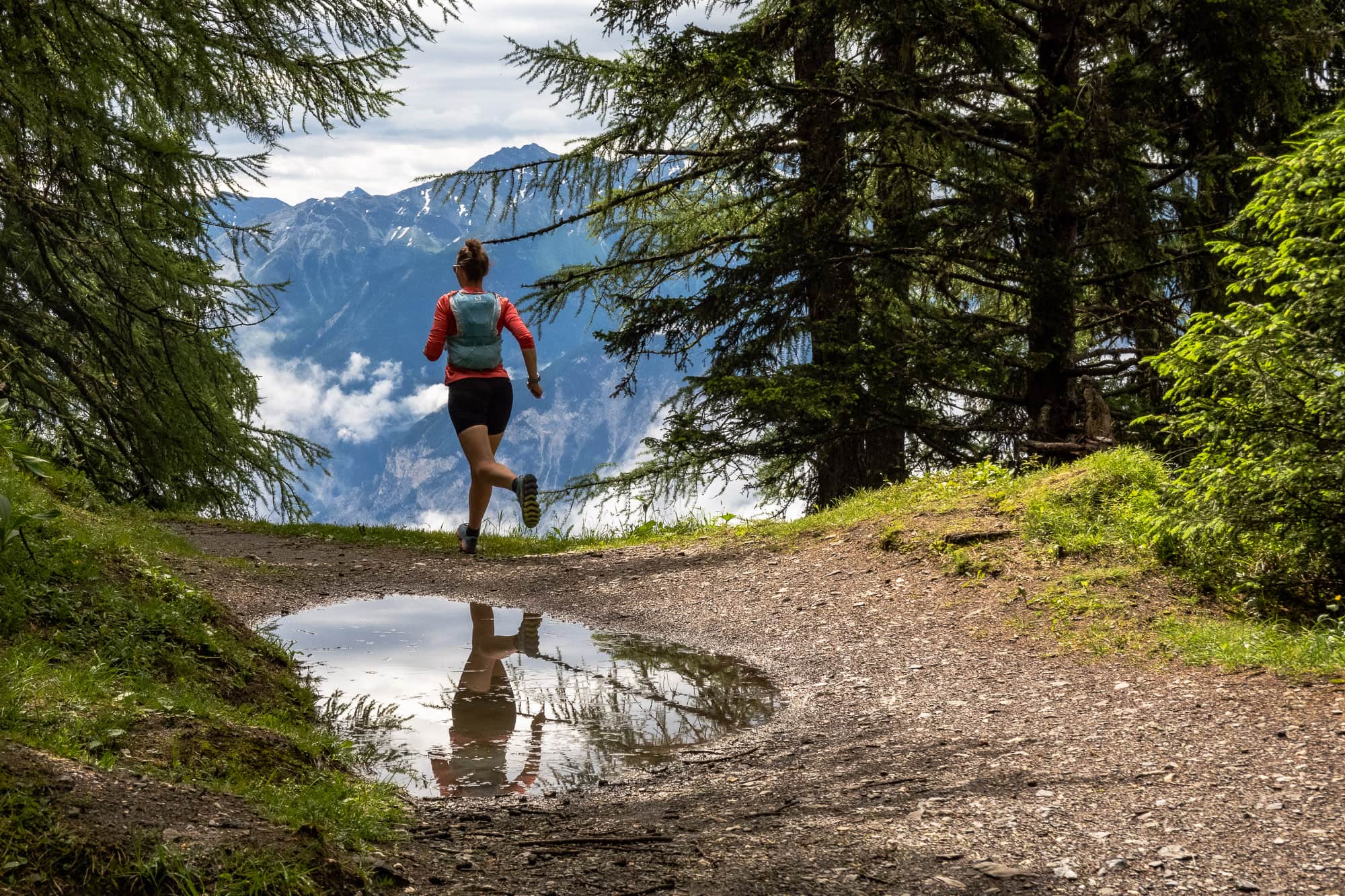
For us, this unagitated water flow means one thing above all: a relaxed jog along the soft forest floor under dense conifers. In between, we occasionally catch glimpses through the tree trunks of the 4000-metre Valais peaks opposite, such as the Bishorn and Weisshorn. We follow the Bisse du Tsittoret against the direction of the river and now reach open alpine meadows, dotted with countless alpine flowers blooming in all colors and shortly afterwards the Cave du Sex. However, this is not a cave for love games, but a small alpine restaurant at an altitude of 1,873 m, which is open in both summer and winter and boasts a sunny terrace high above the Rhone Valley. The name is often written as Cave du Scex, which is derived from the French Provençal word for “rock cave”.
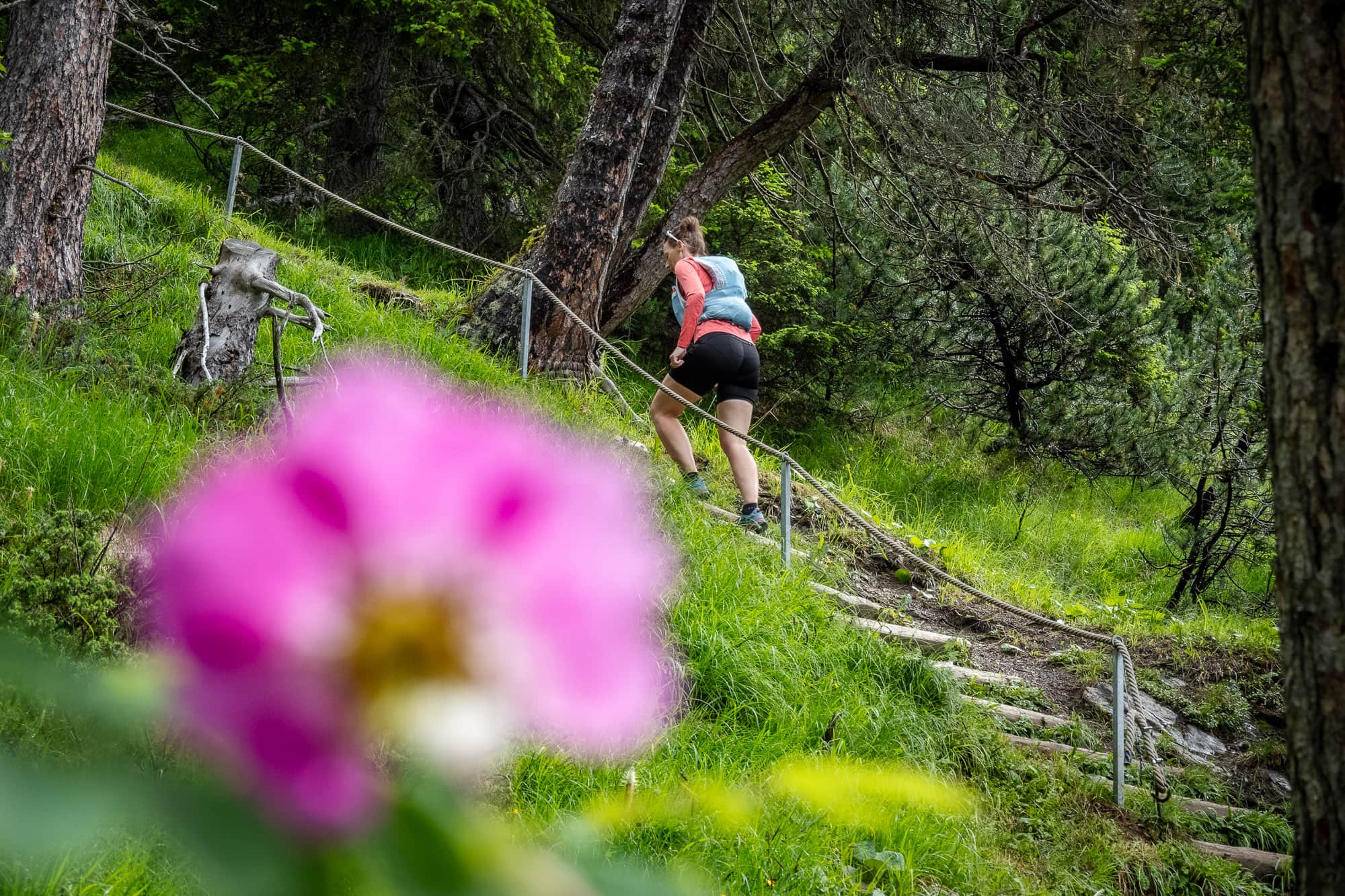
We leave the alpine buildings on the right and climb a few steep meters on a wooden staircase, always next to the Bisse du Tsittoret, which runs almost like a waterfall here. Now it gets spectacular again in places, because as tame as the bisse has been up to now, it nestles wildly against steep rock faces and makes its way through an impressive basin. Around 100 meters below us, the Tièche rushes by, so we are approaching the confluence of the two waters. Before that, however, there is one last steep and difficult climb of around 30 meters in altitude, which overcomes the last vertical distance that separates us from the beginning of the Bisse du Tsittoret. To our right, the Tièche plunges into the depths as a waterfall, to our left the Suone gurgles towards its approximately eight-kilometre-long path - the path that we have followed on our trail run since Crans Montana and which now comes to an end here, at an altitude of 1,951 m at a small bridge that marks the start of the hiking trails in the direction of Trubelstock.
In addition to our outward journey, the hitherto dry weather has now come to an end and while we take a short break, it starts to rain. The clouds have gathered into heavy, rain-laden gray monsters and unfortunately we are denied a view of the enormous basin between Mont Bovin, Les Faverges and Nuseyhorn. After just a few minutes, we set off under dripping tree canopies on the way back, which will take us back to Crans Montana along the same route. We had originally planned a different route for the way back, but due to the dense clouds, we decided to abandon this and prefer to stay under the natural canopy of the trees lining the bisse as far as possible.
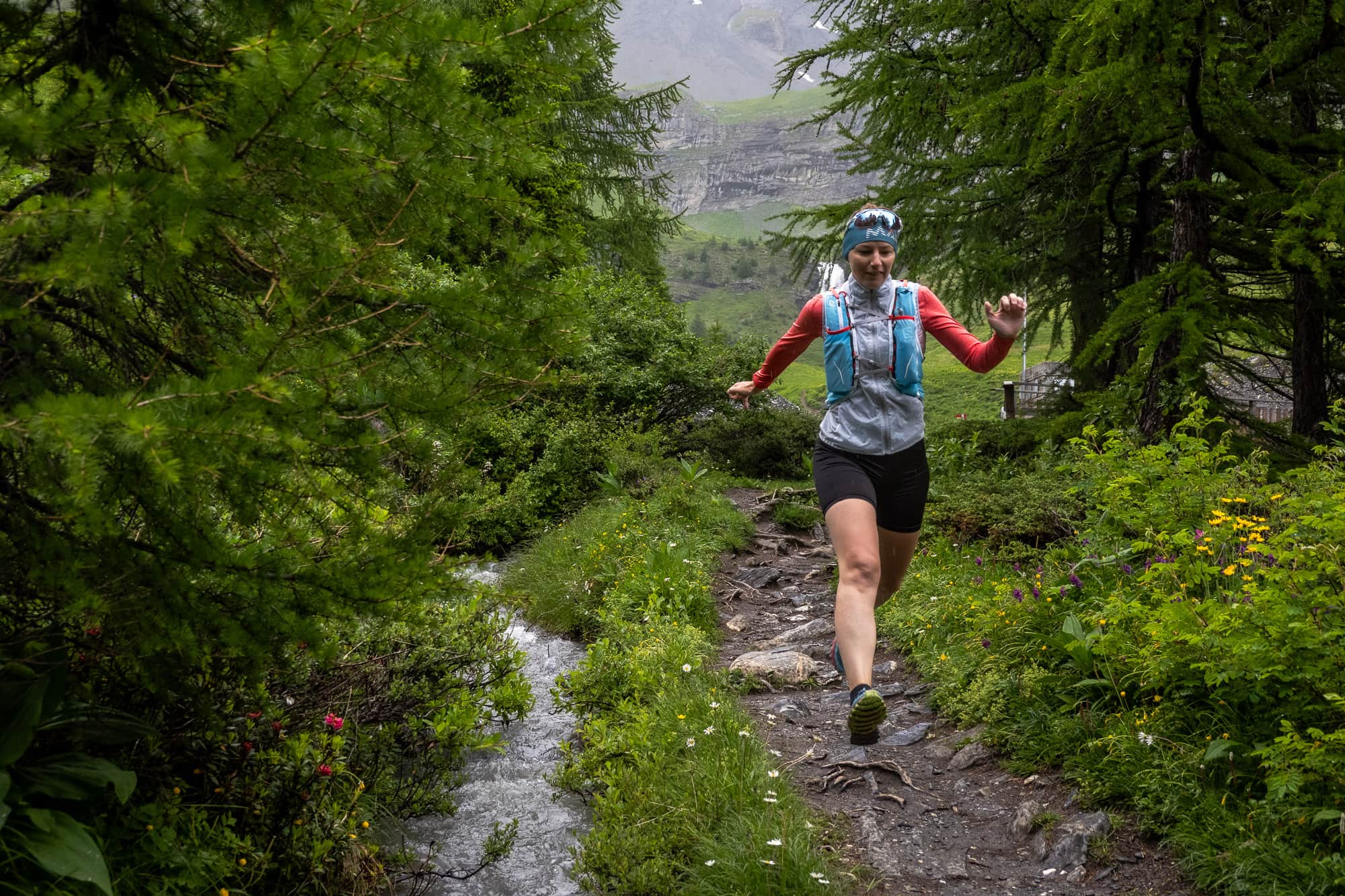
Kilometer after kilometer passes in a silent rut, everyone is lost in thought and I don't pay too much attention to the path in front of me. In the end, I end up with soaking wet feet when I step into a huge puddle just before Crans Montana, commented on by Marina with a jovial “Well? Stepped in it?”. But what the heck, in a few minutes we reach the first houses and realize that we were lucky despite the rain, because when we reach the car and sit in the dry, it really starts to pour. So we did everything right and got to know another exciting and entertaining running route along a Valais bisse - just under 15 kilometers of trail running fun with around 450 metres of elevation gain in beautiful surroundings. Going good.




